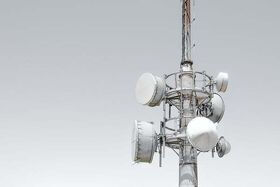The promise of augmented reality (AR) has so far failed to live up to the hype. Initially, the rise of smartphones and tablets with gyroscopes, cameras, and HD displays hinted at a world of wonders. Imagine framing a street on a smartphone and seeing the names of neighborhood bars pop out on colorful labels. Pretty cool, right?
But hold on a minute. CPUs and batteries have never been particularly suited for this kind of task. However, in the latter part of the '10s, augmented reality came to fruition in the unlikeliest of places: factories.
Although AR is not yet widespread in the consumer electronics market, its market value will be $3.6 billion by 2025. The manufacturing sector is leading much of this surge, according to industry researchers.
Factories have been around for almost three centuries and have undergone many transformations. Digital transformation is supposedly the future of manufacturing. Why is it taking so long? For answers, let’s take a look at the automotive and aerospace industries.
The automotive industry is based upon the assembly line. Cars move along on a conveyor belt while workers mount each of their different parts in specific areas. So, what if those workers wore something like Google Glass to get guidance on particular welding techniques?
This is exactly what BMW is doing with its prototypes: BMW workers have welding machines fitted with infrared LEDs. These machines transmit data to a pair of glasses so that the operator can see where and to what extent he or she should direct the welding.
The same thing is happening in the aerospace industry. Airbus has implemented a system called MiRA (Mixed Reality Application) to check some structural elements of their A380 model. According to Airbus, use of the MiRA system allowed the company to avoid months of costly structural inspections.
Examples like these may sound like science fiction, but they are becoming more and more commonplace. Companies like General Electric have been using augmented reality for years. GE's first reference to the technology is in a blog post that dates back to 2017. What they call 'Skylight' improved productivity by 34% at its first use.
It is not just about raw manufacturing. Augmented reality is embracing every phase of production, including production engineering. For example, let's assume that an automotive company needs to rebuild a manufacturing plant from scratch to install batteries in their new electric cars. How can they best design the required updates?
Answer: AR. All an engineer needs to do is visit the plant with his tablet, frame select parts of it, (virtually) populate it with the equipment needed to install batteries, and view how the new production line fits together. Moreover, workers could be trained to simulate their tasks in proposed workstations and make sure procedures can be executed safely before the company invests in a major retrofit.
This line of thinking is also in vogue far away from the private sector. The United States Air Force is already relying on augmented reality for its training purposes. Using devices with cameras, USAF trainers can readily dissect parts of an airframe, making it easier for recruits to understand, for example, how a wing of an F-22 is made and should be maintained.
Big Tech continues to try and make augmented reality popular with gamers and other consumers. But for now, this technology is more suited to professionals. As the process of digitalization gets more mature, more and more blue-collar workers will wear smart glasses, which will make their jobs more efficient than in the past. The only question left is, “Where are we going to go for a beer after work?”

 (+1) 718-5225575
(+1) 718-5225575